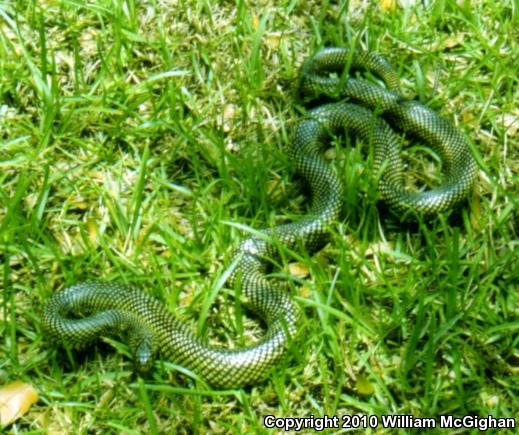Apalachicola Kingsnake (Lampropeltis getula meansi)
Created: November 9th, 2010 - 06:09 PM
Last Modified: March 17th, 2012 - 08:27 AM Entered by: William McGighan
Record 56903
Last Modified: March 17th, 2012 - 08:27 AM Entered by: William McGighan
Record 56903
|
Country: United States |
State: Florida |
County: Franklin County |
Time: 1974-07-00 21:30:00 |
|
|
Qty: 1 |
Age: Sub-Adult |
Sex: Male |
Method: Road cruising |
Habitat: Pine Forest - fresh water creek |
|
Body Temperature: ----- |
Air Temperature: ----- |
Ground Temperature: ----- |
Humidity: ----- |
|
|
Sky Conditions: Heavy rain |
Moon Phase: ----- |
Elevation: ----- |
Barometric Pressure: ----- |
|
Vouchers



Comments
Please send me your e-mail address - [email protected]
First, I do apologize that I am remiss in picking up the book as yet. (Seriously – not being facetious here)
2nd I’m sure you are right about logging practices on several levels, however, I found these animals in several, non-pine forest habitats that today are no different than 40 years ago.
If they were super numerous back then, any number of things could make them harder to find today. Perhaps the forest management practices, perhaps the exponential explosion of fire ants, perhaps increased highway traffic, perhaps, and least probable and verging on ludicrous to me, over collection.
The issues for me are still more the human side than the zoological side, and the credibility of the stories.
I’ve talked to hobbyists, ologists, and commercial folks (including some who are most credible individuals), and most permeate the stories of great numbers, but none say they were there and saw the numbers, first hand. The only folks I’ve talked to who remember large numbers coming in were folks in the commercial network, which, as you know, relies heavily on local collectors who are often quite proficient in their own back yard and sometimes kept anonymous by their buyer/distributor (protecting his resource).
PM or email me and we can chat more freely with some sensitive specifics.
Thank you. I don't know if you've seen my book, but I wrote in it that forest practices have changed over the last 40 years, with fewer trees being planted and cut, thereby changing the habitat to a more unsuitable condition for higher densities of kingsnakes. Do you think that might be a factor?
You know, Brian,
My personal opinion is contrary to the existing popular thought. I don't believe that they were any more common back then, than they are now. Every person I talk to who says that tells it as second or third person.
The right cover in the right habitat was key. I made dozens of trips and did examine about 86 alive and dead from 71-77, with maybe only a dozen trips between 77 and now.
.
I think that the perception of abundance came from the reptile dealers, because there was no shortage of WC animals coming into the system in the ‘70s.
One very significant difference from then to now is that, back then, the Port St Joe Paper Company was going full throttle. It employed thousands of people driving around the forest harvesting pulp wood. If a pulp worker could get $10 for each animal, he could get a week’s salary with 10 animals! When the paper mill shut down, many were in "survival made".
.
I do see a drop in DORs on certain specific roads in the past 40 years because, I suspect, of population and traffic increase.
So...were they really that much easier to find back then?